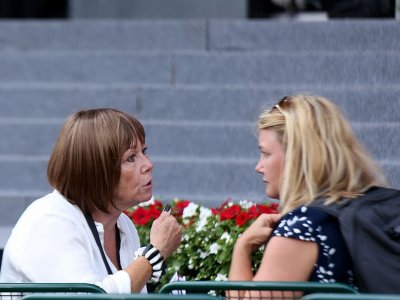
PUTTING MEN IN THE PICTURE
Nothing messes up the act of listening to someone more than thinking about what we are going to say next while they are speaking or using what is said as a springboard for us to make our point.
Many debates in society are marred by this disconnect. The relationship between men and women is one of them. But we have a chance to change this in 2021. The outpouring of grief and anger surrounding the murder of Sarah Everard took many people by surprise. Most of those taken aback were men. Women know all too well the feelings of insecurity in public places. Men might too, if they listened more carefully to what the women they know are telling them before launching into their latest act of mansplaining. I should know; I once actually mansplained the Russian punk collective Pussy Riot to our feminist daughter.
And not just listen to those they know. Social media makes it possible to hear many more voices and if this feels confusing at times, the clarity and consistency with which women are speaking on the subject of sexual harassment and violence right now is one of those wake up moments after which things can’t really be the same.
Take these findings in.
80% of women of all ages say they have experienced sexual harassment in public. Between the ages of 18-24, this figure rises to 97 out of 100 women. The debate on sexual harassment and violence towards women is framed in a particular way, with men just out of the picture. And so it comes across as a women’s problem, to be dealt with by women, who must adjust their behaviour to be less visible. Men, meanwhile, more or less get a free pass. And so the idea of women’s bodies somehow being public property is sustained.
Until men are seen as part of the picture, and the debate is framed as male harassment of women or male violence on women, it’s unlikely much will change.
So let’s look at that statistic again. If 80% of women of all ages have experienced sexual harassment in public, just how many men must be harassing women?
And women are being intimidated in other ways, too. The social media accounts of well-known and influential women are frequently poisoned with vicious, hate-filled language about the violence that is going to be done to their bodies. It isn’t easy to get a measure of the scale of misogyny online, but the growth of women-hating platforms is growing all the time, fuelled by groups like the incel movement, so-called involuntary celibates who blame women for all their misfortunes.
Two comebacks are often made. The first is that what women call sexual harassment is merely men having banter running up against women with no sense of humour. This conclusion is usually reached without actually asking the women concerned how they feel about it. Flirting is not flirting when the other person indicates they do not want it. When unwelcome attention persists, it can start to feel unsettling, even threatening.
The other claim is that men are much more likely to be the victims of violent crime than women. This is true, and a cause for attention in its own right. But countering the pain of abused women by saying we need to pay more attention to the welfare of men can be just another way of avoiding the problem of male on female violence. And when we give good and proper attention to the issue of violence against men, we run up against the same fact: it is men who commit most acts of violence in life.
As a man, I want to encourage men to show up when women are demeaned, harassed or abused. To sign up to the White Ribbon campaign: https://www.whiteribbon.org.uk/ This campaign asks men not to commit violence against women - but it goes further than that. It also asks them not to excuse or remain silent over violence or threats of violence against women.
And that’s the harder bit.
The moment we finally have to stand up for what we believe usually takes us by surprise, making the right response easier to fluff. To turn a deaf ear to what has been said or a blind eye to what has been written because we want a quiet life or because we are afraid.
There is a story in the life of Jesus recounted in the Gospel of John chapter 8 where a woman, apparently caught in adultery, is hauled into his presence by religious leaders. She is surrounded by men making this accusation against her in a very public place. If found guilty, she would meet a terrible, violent end. But her alleged misdemeanour is not the focus of the religious leaders. She is simply a pawn in a game they want to play with Jesus. Her predicament is used instrumentally.
Jesus, curiously doodling on the ground with his finger, draws attention away from her humiliation, puncturing the tension. And he saves her life by holding a mirror up to the men gathered around her: ‘let anyone among you who is without sin be the first to throw a stone at her’.
The story is usually seen as a study in the vice of hypocrisy. The religious leaders are named checked, but their masculinity is not. Looked at another way, this is about the prevention of violence on a lone woman by a group of men, achieved by one man who stood apart.
Samantha Power, former US ambassador to the UN, said there are many bystanders in life, but she coined the term ‘upstanders’ to describe those who speak out against violence.
I would encourage men to make the White Ribbon pledge with me. To be an upstander when it counts. To make the world a safer place for women to live and flourish in because they are being listened to and men are taking responsibility for their own actions. Where love and equality, respect and kindness point to the better world that God in Christ is calling into being.
POPULAR ARTICLES

Obama's Covert Wars
The use of drones is going to change warfare out of all recognition in the next decades.

Through A Glass Starkly
Images of traumatic incidents caught on mobile phone can be put to remarkable effect.

What Are British Values?
Is there a British identity and if so, what has shaped the values and institutions that form it?


